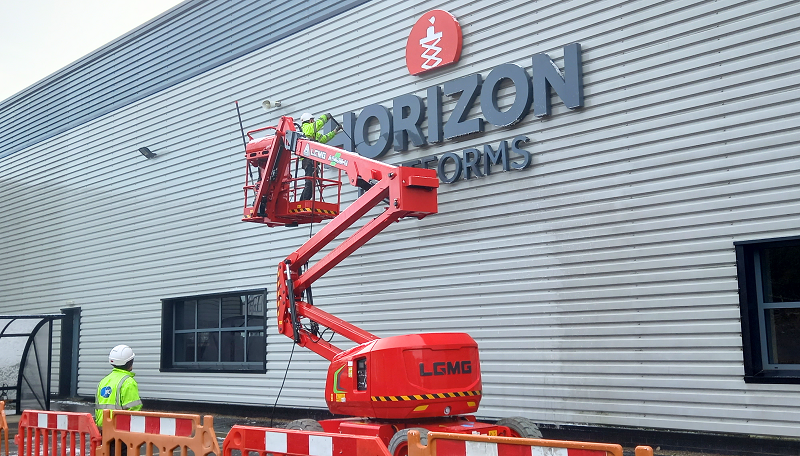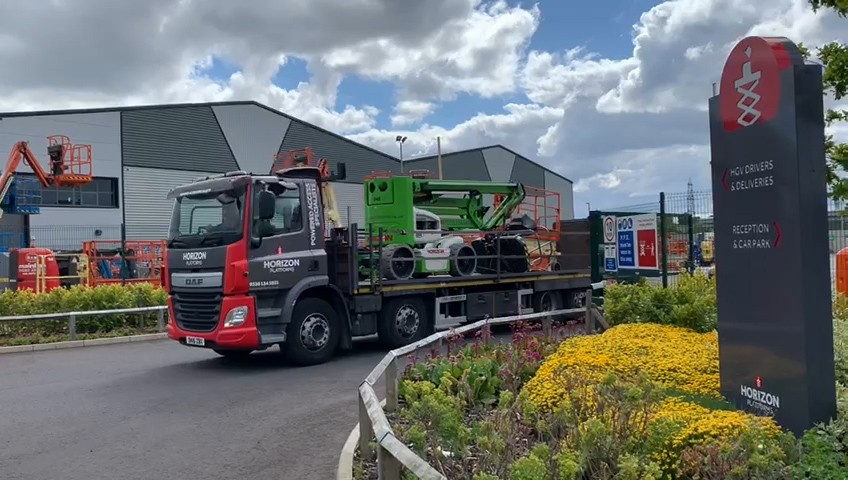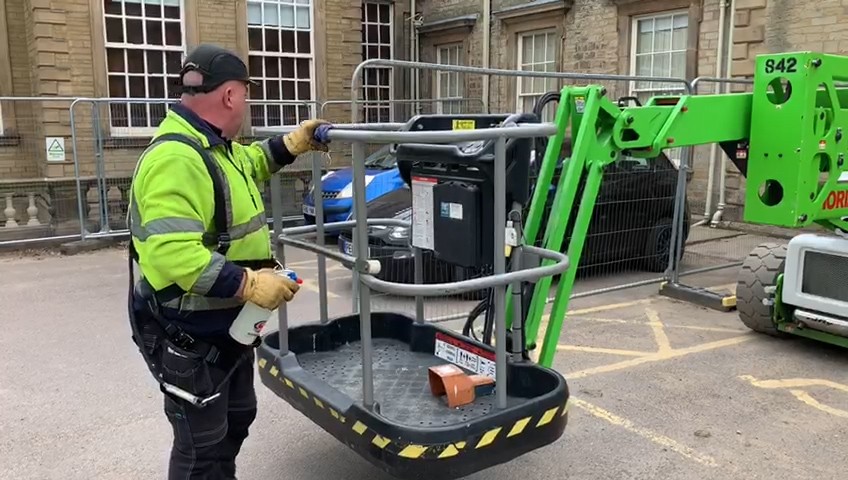Operating a cherry picker requires a strong commitment to safety, precision and skill. With this in mind, to ensure the smooth and safe operation of your MEWP, it’s essential to have a well-structured checklist in place.
In this blog, we’ll break down the key sections to include on an effective cherry picker checklist, covering everything from hiring MEWPs and access platform training to safety protocols, pre-operation checks, and more, to ensure you have a safe and successful experience.
Cherry Picker Training and Safety Protocol
It’s essential for MEWP operators to be equipped with the right knowledge and skills before stepping foot onto a cherry picker. This means being fully aware of the health and safety regulations when working from height, to minimise risks for everyone on-site.
MEWP Training Courses
The first thing to consider for cherry picker user health and safety is providing necessary training for each operator, so they have a clear understanding of required safety protocols when operating powered access platforms.
At Horizon Platforms, we offer an extensive range of cherry picker training courses, including IPAF courses, to provide a wealth of knowledge on the do’s and don’ts of operating MEWPs. Our training list includes, but is not limited to:
- MEWPs for Managers
- IPAF Instructor Courses
- MEWP IPAF Safety Courses – Operator, Harness Awareness and Site Assessment for MEWP selection
- IPAF & PASMA 1 Day Combined Course
By enrolling in accredited training programs, you can learn about cherry picker controls and regulations, safety protocols, and best practices. Whether you’re a beginner looking to gain your first qualification or a seasoned operator looking to enhance your skills, we have a range of training programs suited to all levels of experience.
Pre-Operation Checks
Before you can begin operating your cherry picker, you must first ensure your selected work environment Before you can begin safely operating your cherry picker, you must first ensure your selected work environment is safe for use; as outlined by HSE’s guidance on site rules and induction. This includes everything from ground stability to clearing sites of potential hazards that might pose a risk to either the operator or others.
Some of the essential inspections that should be added to your cherry picker checklist include:
Function & Visual Inspection:
Look for any visible signs of damage, leaks, or loose components on the boom lift. At Horizon Platforms, we carry out a mandatory extensive pre-delivery cherry picker inspection across all our hired access platforms, to assess the overall health and safety ahead of delivery.
With that said, it is essential that daily pre-use inspections are also carried out by operators before using the MEWP, including visual and function checks to verify the ground, platform and emergency controls are all functioning correctly.
Ground Stability Check:
Verify that the cherry picker is on stable ground to ensure it is safe for use. Due to the weight of MEWPs,
Verify that the cherry picker is on stable ground to ensure it is safe for use. Due to the weight of MEWPs, the ground can settle under heavier loads, causing the machine to tip and overturn.
For more information, check out our ground stability safety checklist for the 7 common hazardous conditions to look out for.
Work Area Inspection:
Identify potential hazards, such as overhead obstructions, power lines, or unstable surfaces. Clear floors and surrounding areas of tools, equipment and debris that may pose a risk to on-site workers.
Cherry Picker Safety Rules
When working from heights in a cherry picker, it’s essential to adhere to the correct health and safety procedures.
Ensure Personal Fall Protective Equipment is Worn (PFPE)
Always wear a safety harness and the appropriate PFPE, including helmets, gloves, and safety shoes. A safety harness, in particular, provides a vital lifeline should any unexpected incidents occur while operating at heights in a boom lift. Ensure that these are correctly fitted and securely attached to the designated anchorage point.
Weight Limits
Strictly adhere to the MEWP manufacturer’s recommended safe working load (SWL) for cherry pickers and scissor lifts – manufacturers specify SWLs for a reason. Overloading the platform compromises stability and safety, and can incur excessive stress leading to structural damage.
Controlled Speed
Operate the cherry picker at a controlled speed, especially when travelling the MEWP near people or structures, and avoid abrupt or jerky movements to maintain stability. Remember, smooth and controlled movements are essential to prevent any sudden shifts in balance. This is particularly crucial when changing the elevation of the platform.
Situational Awareness
Stay vigilant and maintain awareness of your surroundings. Keep an open line of communication with Stay vigilant and maintain awareness of your surroundings, and keep an open line of communication with ground workers through radios or hand signals – awareness is your greatest ally when working at heights.
No Unattended Operation
An absolutely essential cherry picker safety rule to live by: never leave the MEWP unattended while it’s elevated, and ensure that a qualified operator is in control at all times.
Leaving the cherry picker unattended while elevated poses a serious safety risk. Plus, exiting the platform at height poses a serious risk, which should only be undertaken in exceptional circumstances
Adherence to Manufacturer Guidelines
Strictly follow the specific make and model guidelines found in your cherry picker’s instructor’s guide, which is delivered with the machine and normally in a box near the platform controls.
Never cut corners here, as cherry picker controls, specifications, and capabilities are different and often tailored to each machine. These guidelines are designed to maximise safety and efficiency by guiding the operator to use the equipment within its intended parameters.
Preparing for Emergencies:
The Work at Height Regulations 2005 stipulate:
“Employers must have a plan in place for emergencies and rescue when working at height, and the emergency services cannot be entirely relied upon”.
When preparing for emergencies, you should always make sure the ground controls are accessible for use by ground rescue people in case of an emergency before elevating the MEWP. You should also avoid positioning the MEWP with the side where the ground controls are up against a wall or structure.
To ensure you can handle emergencies and potential hazards, you must also adhere to the following:
- Emergency Lowering Procedure: Familiarise yourself with the manual lowering procedure in case of power failure. Practise this procedure regularly to ensure confidence in executing it swiftly and safely.
- Communication Protocol: Establish clear communication channels with ground personnel for emergencies. Define specific signals or phrases that indicate an emergency situation and require immediate action.
- Evacuation Plan: Identify the nearest exit points and establish a designated meeting area for emergencies. Ensure that all personnel know the evacuation plan and rehearse it periodically.
End of Day Safety Checks:
As the end of the day nears, safety protocol must be maintained. Be sure to wrap up the workday with these crucial checks:
Clean and Inspect Your Cherry Picker
- Remove any debris or spills from the cherry picker.
- Perform a comprehensive visual inspection for any signs of damage, wear, or loose components.
- Document and report any issues for immediate attention.
Proper Parking
Park the cherry picker in the designated storage area, ensuring it’s on stable ground and adequately secured. Finally, MEWPs should be switched off, and keys should be removed.
Should an emergency occur, it’s essential that equipment used for firefighting or first aid, for example, are not blocked and emergency routes are clear.
Need Advice or Guidance for Working Safely and Effectively on a Cherry Picker?
We pride ourselves on our approach to safety and are strong advocates for cherry picker health and safety. That’s why, besides this blog, we have a range of articles on working safely at height on MEWPs.
Of course, if you’re interested in upskilling yourself and your teams in a practical environment, essential powered access training will provide you with the necessary knowledge. Or, for a more informal insight, our experts are happy to offer MEWP safety advice and guidance.
To discover more about choosing the right cherry picker for your requirements, browse our extensive and dependable range today, or get in touch if you have any questions – and one of our dedicated team members will be happy to assist you.



